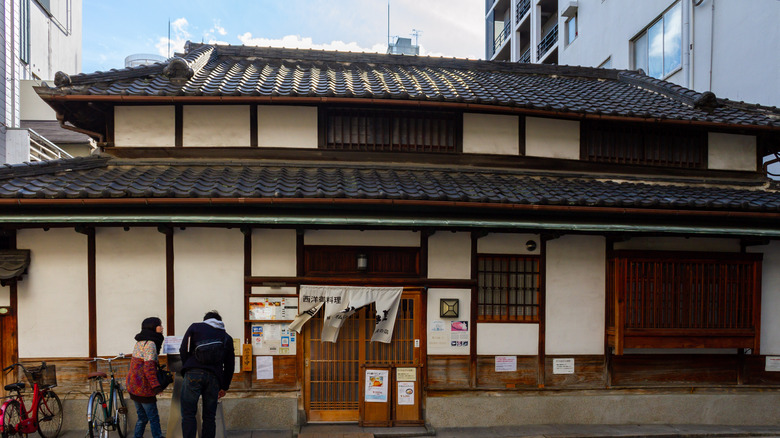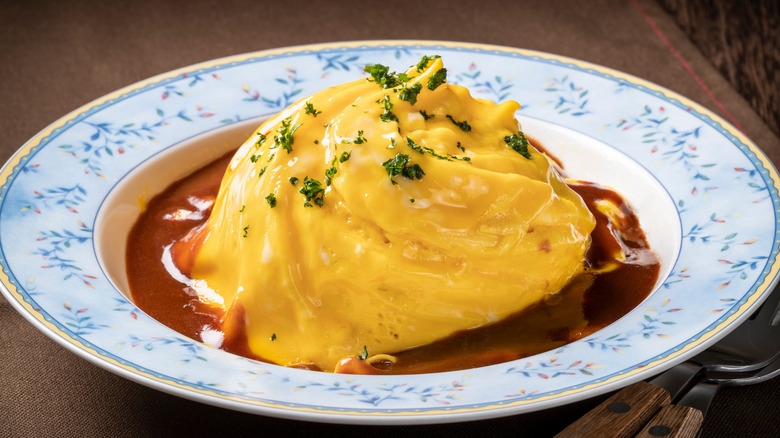The Hazy Origins Of Omurice
Omelets are a crowd-pleaser — they can be made with any ingredients you have on hand and can be adjusted to your personal preference, and once you master a few omelet-making techniques, they can be relatively easy to make.
However, omelet fans may want to consider graduating to another take on the dish: the Japanese omurice. For the uninitiated, omurice is an impressive dish in which a large part of its appeal lies in its presentation: a fluffy egg omelet, cooked slightly underdone, is gently laid upon a bed of fried rice before it's artfully sliced down the middle. Once cut, the omelet splits open gracefully and unfolds to a larger, scrambled egg layer of deliciousness that is then topped with a ketchup sauce.
Some living omurice masters, like Chef Motokichi of Kichi Kichi Omurice, artfully open the egg omelet in varied ways. Omurice is deservedly wildly popular, but it's a fairly recent addition to Japanese cuisine– and how it made its way into Japanese kitchens is unclear.
Omurice, a portmanteau of English words
In Japanese, omurice is pronounced o-muraisu (オムライス), which is a portmanteau of the Japanese pronunciation of the Frenc word omelette and the English word rice. Omurice isn't of Western origin but rather a yoshoku, a Western-style dish that has developed independently in Japan. The word itself is a wasei-eigo, made of English words that have since been adopted into the Japanese language, reflecting the Western influence but also the wholly uniquely Japanese dish.
Some say that the omurice first appeared on the scene in Japan in 1900, making its debut at Renga-Tei, a restaurant that serves Western dishes in Tokyo. Renga-Tei claims to be the first Western-style restaurant in Japan that opened in 1895. Today its doors are still open for business, and they are serving up dishes that they claim to have developed like the omurice. One other restaurant in Osaka, however, the Hokkyokusei, also claims to be the inventor of the popular omurice dish — though they only opened their doors in 1922.
Rise in popularity of omurice and variations
No matter which restaurant invented the omurice, the new Western-style dish quickly caught on and Japanese people were eating more meat and eggs than ever before. Prior to World War I, religious beliefs caused many Japanese to eat mostly vegetarian foods. During the Meiji restoration period, foreign influences were allowed to penetrate the country, and among them was eating more meat and dairy.
The classic and most simple iteration of omurice involves chicken fried rice and eggs with ketchup for the topping. This Japanese dish also made it to two former Japanese colonies around the same time it came onto the scene in the early 1900s — Taiwan and Korea. In Korea, omurice is called omeu-raiseu, and the omelet is a bit thinner, whereas in Taiwan omurice is called danbaofan (蛋包飯), or egg-wrapped rice, and the egg is served in the form of a tornado swirl.
No matter how the eggs are cooked and who really invented omurice, it's uncontested that the dish itself is delicious.


